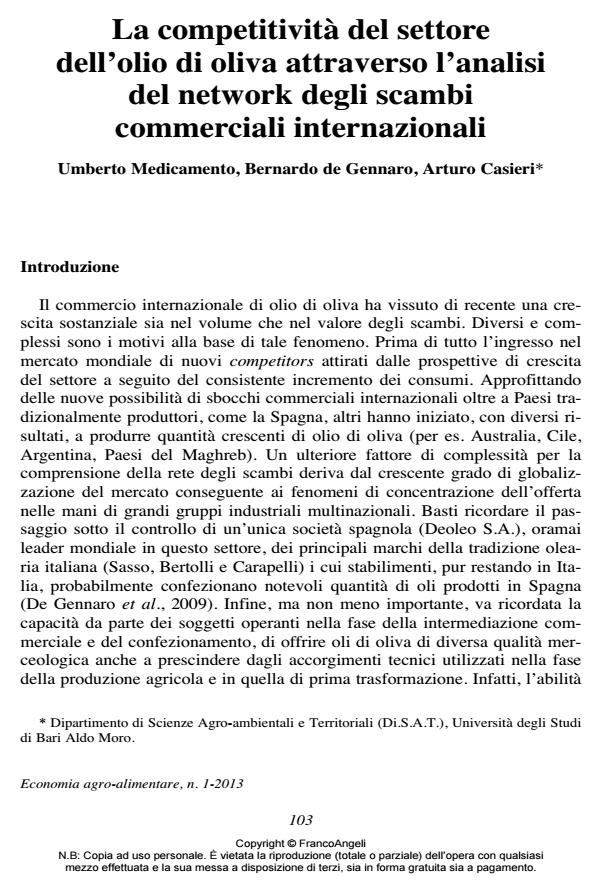The competitiveness of the olive-oil industry through analysis of the international trade network
Journal title ECONOMIA AGRO-ALIMENTARE
Author/s Umberto Medicamento, Bernardo De Gennaro, Arturo Casieri
Publishing Year 2013 Issue 2013/1
Language Italian Pages 20 P. 103-122 File size 151 KB
DOI 10.3280/ECAG2013-001005
DOI is like a bar code for intellectual property: to have more infomation
click here
Below, you can see the article first page
If you want to buy this article in PDF format, you can do it, following the instructions to buy download credits

FrancoAngeli is member of Publishers International Linking Association, Inc (PILA), a not-for-profit association which run the CrossRef service enabling links to and from online scholarly content.
This paper aims at showing the explanatory potential of network methods applied to the analysis of Country level competitiveness within specific productive sectors. More specifically, we focused on each Country’s position within the network of international commodity trade relationships, assuming that this influences its Country level competitive advantage. We based this statement on Ronald Burt’s theory of "structural holes" which, if existent within a network, grant to those agents occupying the holes the chance to manage a strategic resource which becomes a competitive advantage. In order to test this hypothesis we applied network analysis to the international virgin olive oil trade network, represented as a weighted, directed network (wdn).
Keywords: Olive oil, international trade network, structural hole
Jel codes: F13, F14
Umberto Medicamento, Bernardo De Gennaro, Arturo Casieri, La competitività del settore dell’olio di oliva attraverso l’analisi del network degli scambi commerciali internazionali in "ECONOMIA AGRO-ALIMENTARE" 1/2013, pp 103-122, DOI: 10.3280/ECAG2013-001005